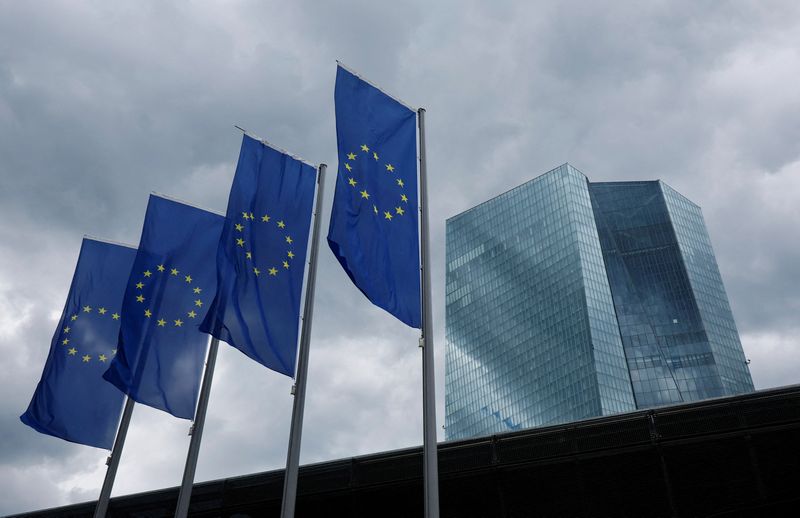ECB, Canada join G10 central bank easing push in June
2024.07.01 20:08
By Karin Strohecker and Sumanta Sen
LONDON (Reuters) – The European Central Bank and the Bank of Canada in June joined the ranks of big central banks easing policy, while emerging markets ploughed ahead in their quest to lower interest rates.
Three of the nine central banks overseeing the 10 most heavily traded currencies that held meetings in June reduced their lending benchmarks, with Switzerland delivering its second rate cut in this cycle.
This makes June the month with the highest number of rate cuts delivered by G10 central banks since March 2020, when policymakers slashed rates to shore up faltering economies in the face of the COVID-19 outbreak.
Meanwhile the U.S. Federal Reserve, the Bank of England, and central banks in Australia, Sweden, Norway and Japan — which is inclined to tighten not ease policy — kept lending rates unchanged in June.
“We’re in this global disinflation path – it’s just probably a bit slower than what we’d hoped for six months ago,” said Paul Greer, portfolio manager at Fidelity International.
“We started to see G10 central banks cut rates – Sweden and Switzerland, Canada, the ECB. I have confidence that the Federal Reserve will cut rates this year as well, maybe even a couple of times.”
The Fed is now expected to deliver a first full quarter-point rate cut in November.
Emerging market central banks soldiered on in their rate cutting endeavour, albeit at a slower path.
Fourteen of the Reuters sample of 18 central banks in developing economies held rate-setting meetings in June, with four delivering cuts. Central banks in Brazil, the Czech Republic, Colombia and Chile reduced lending rates by 150 basis points between them. None hiked rates.
“Obviously, the Fed hasn’t been cutting as aggressively as markets (had expected),” said Ray Jian, a portfolio manager at Amundi, adding that emerging markets also had their own idiosyncratic drivers that slowed down the speed of easing across developing nations, especially on the fiscal side.
Brazil’s President Luiz Inacio Lula da Silva is ramping up pressure to spend more and that should increase next year due to the election cycle, while Mexico’s MORENA grouping, fresh from securing a landslide victory, also wanted to boost fiscal spending, said Jian.

“A lot of those local fiscal developments are actually putting pressure on the market to say maybe those central bank cuts have to be pushed back, because fiscal policy becomes more aggressive, and therefore monetary policy has to be tighter for longer,” he added.
The latest moves in emerging markets took the tally of cuts since the start of the year to 1175 bps across 23 moves. Total hikes over the same period stood at 775 bps, almost exclusively thanks to Turkey hikes.







